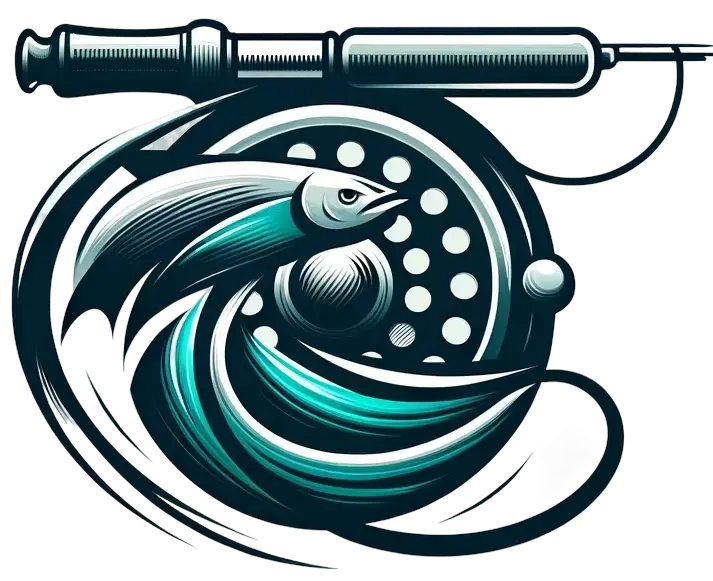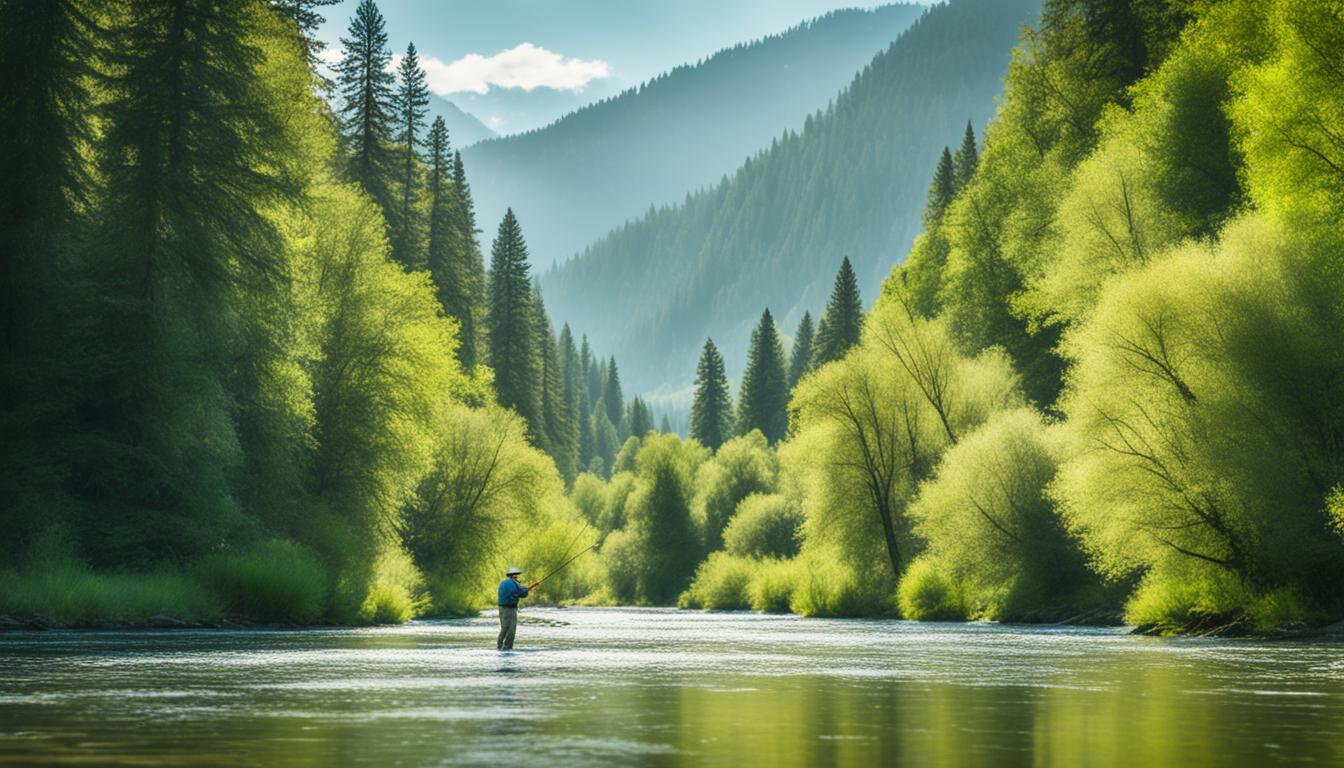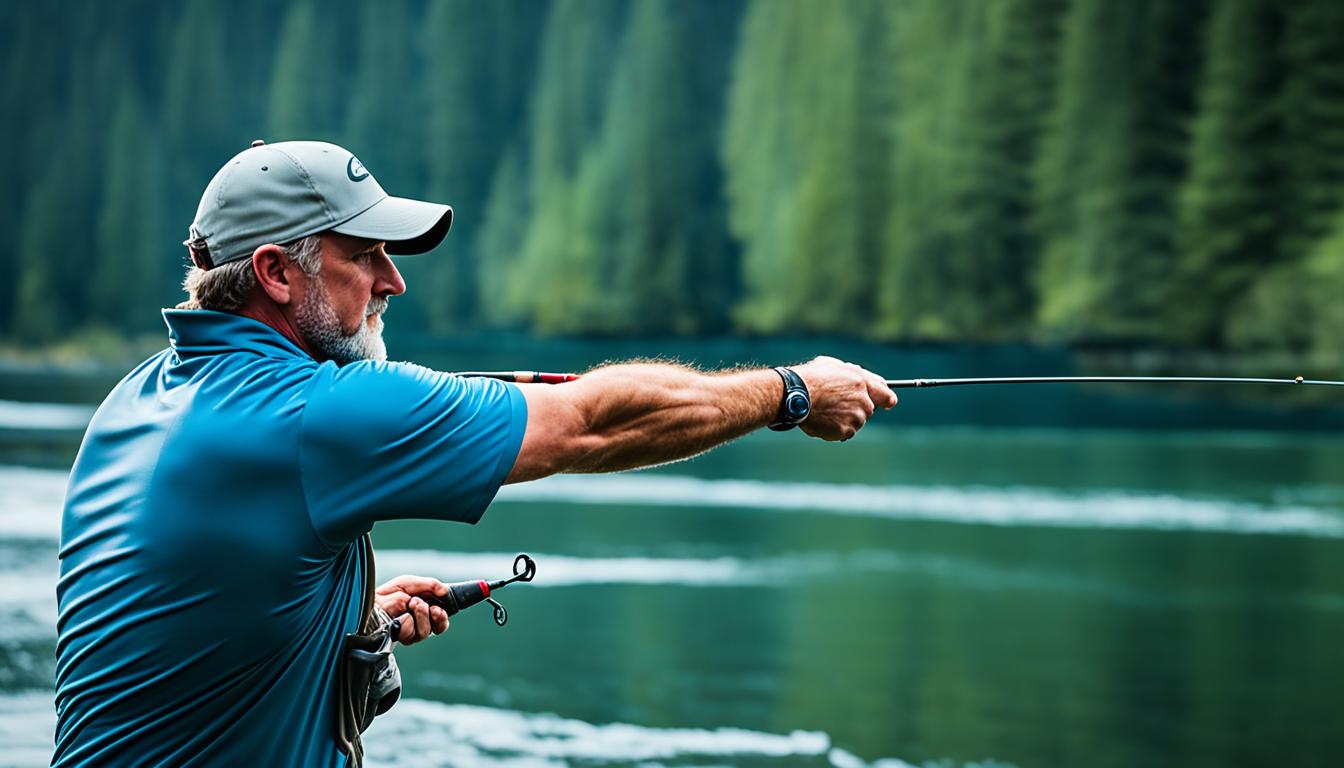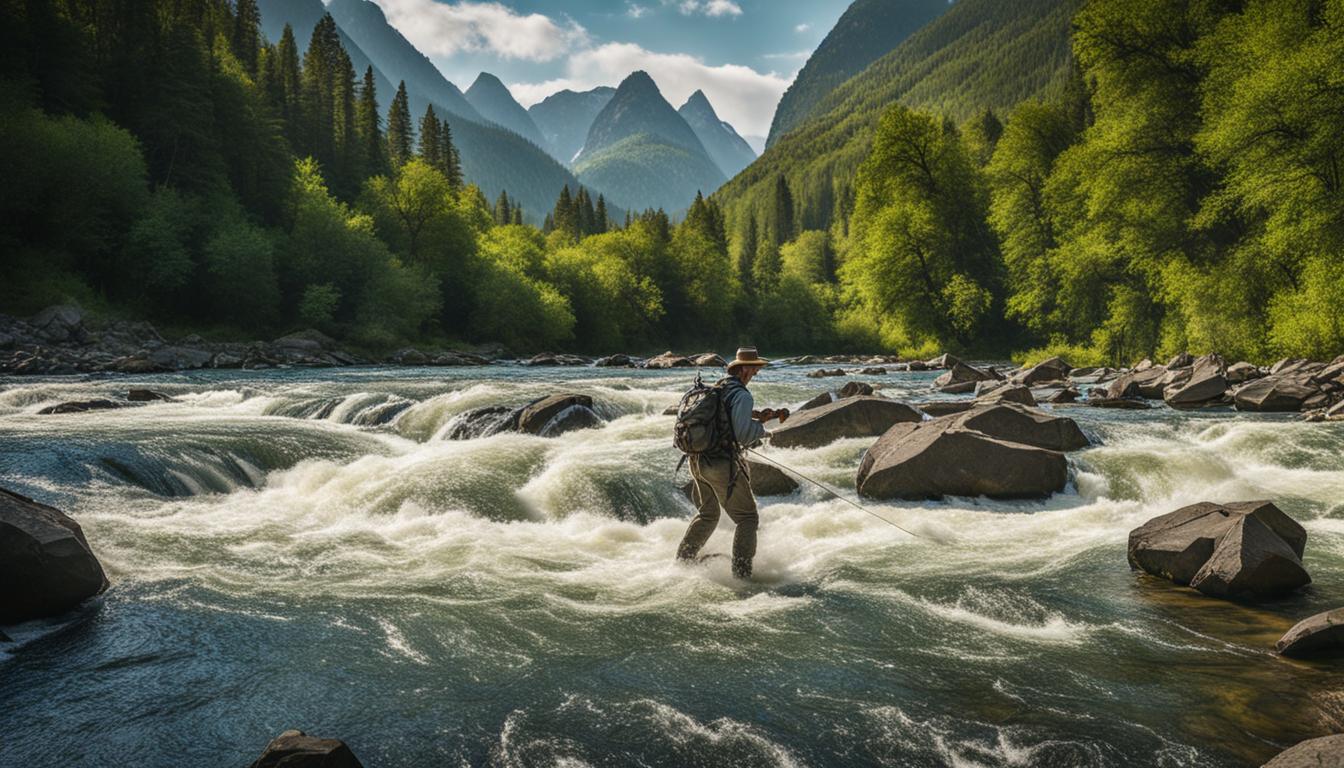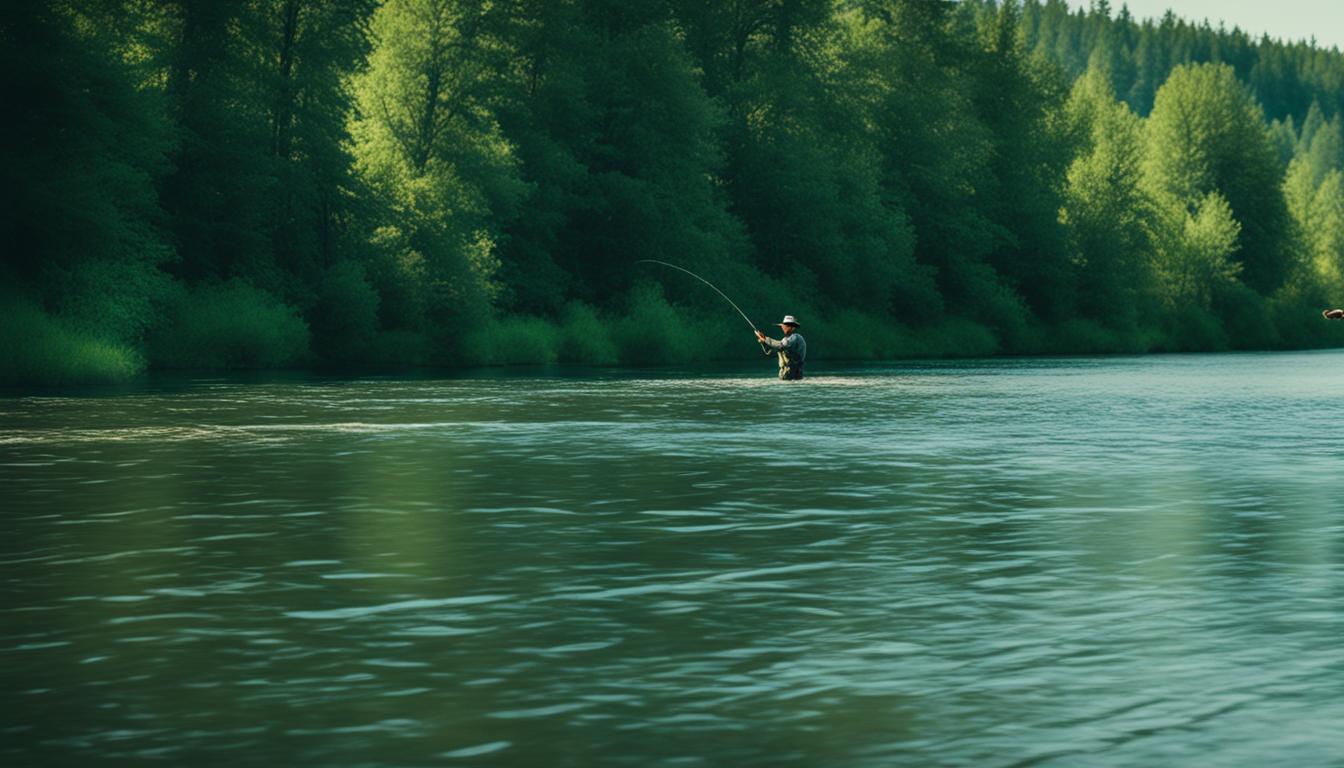Dry fly fishing is a beloved angling technique that allows us to connect with nature while pursuing trout. There’s something magical about watching a fish rise to take a floating fly on the water’s surface. In this article, we will explore the fundamentals of dry fly fishing, including essential techniques and tips to help you improve your success on the water. So, grab your gear and let’s dive in!
Key Takeaways:
- Understanding the importance of fly pattern selection and presentation is crucial in dry fly fishing.
- Minimizing drag through proper line mending techniques, such as the reach cast and curve cast, can improve your chances of enticing trout.
- Choose fly patterns that accurately imitate local insect hatches, such as the Adams Parachute, Elk Hair Caddis, Blue Wing Olive, and Royal Wulff.
- Mastering dry fly presentations involves casting upstream, achieving a drag-free drift, and avoiding excessive mending.
- Essential gear for dry fly fishing includes a suitable fly rod, weight-forward floating fly line, tapered leaders, fly box, and other necessary accessories.
The Importance of Fly Pattern Selection
The choice of fly pattern plays a crucial role in dry fly fishing. Anglers often debate whether pattern selection or presentation is more important. Some anglers carry a wide variety of fly patterns to ensure they have the perfect match for the trout’s preferred food source. Others, like the Catskill fly-fishing legend Ed Van Put, prefer to stick with a few tried-and-true patterns. Both approaches can be effective, but the key is to have confidence in the fly patterns you choose.
It’s essential to study the local insect hatches and select flies that imitate them accurately. Popular dry fly patterns include:
| Fly Pattern | Description |
|---|---|
| Adams Parachute | A versatile fly that imitates a wide range of mayflies. |
| Elk Hair Caddis | An effective fly for imitating caddisflies, with excellent floatation properties. |
| Blue Wing Olive | A popular fly for imitating baetis mayflies, known for their small size. |
| Royal Wulff | A classic attractor pattern that can mimic various insects, including stoneflies and caddisflies. |
By selecting the best dry flies for fishing, anglers increase their chances of fooling trout into striking. It’s important to have a variety of sizes and patterns to match the specific hatch you’re targeting. Remember, different patterns work at different times of the year and in various water conditions, so experimentation is key. The more experience you gain, the better you’ll become at choosing the right fly to entice those elusive trout.
Mastering Dry Fly Presentations
In dry fly fishing, presentation is paramount to entice trout into striking. To achieve a natural and enticing presentation, anglers must employ various casting techniques and techniques to avoid drag. Let’s explore some essential tips to help you master the art of dry fly presentations.
1. Upstream Drift Technique
One effective technique is the upstream drift. To execute this technique, cast your fly upstream of the target area, allowing it to drift downstream over the fish. By doing so, you create the illusion of a natural insect on the water’s surface, increasing the chances of trout taking the bait.
2. The Reach Cast
A valuable tool for achieving a drag-free drift is the reach cast. To perform a reach cast, sweep your casting arm upstream just before the line settles on the water. This positioning allows the fly to land downstream of the tippet, leader, and fly line, providing a longer drag-free drift. Mastering the reach cast is key to presenting your fly accurately and enticingly.
3. Minimize Excessive Mending
While some mending may be necessary to maintain a drag-free drift, excessive mending should be avoided. Excessive mending can cause the fly to sink or deviate from the fish’s feeding lane. Instead, focus on precise and subtle mends to create natural movement and avoid alarming the fish.
Pro Tip: Remember, achieving a successful presentation is about mimicking the natural behavior of the insects on the water’s surface. The more accurately you can imitate their movements, the higher your chances of enticing trout to strike.
4. Continuous Observation
Keep a close eye on the fish and their feeding behavior. Observe their rise patterns, feeding movements, and preferred feeding lanes. This observation will help you determine the best position to make your cast and present the fly in a way that appears natural.
5. Practice and Patience
Mastering dry fly presentations takes practice and patience. It’s essential to spend time on the water, refining your casting techniques and observing the fish’s response to your presentations. With persistence, you’ll develop the skills and instincts necessary to fool trout into striking your dry fly.
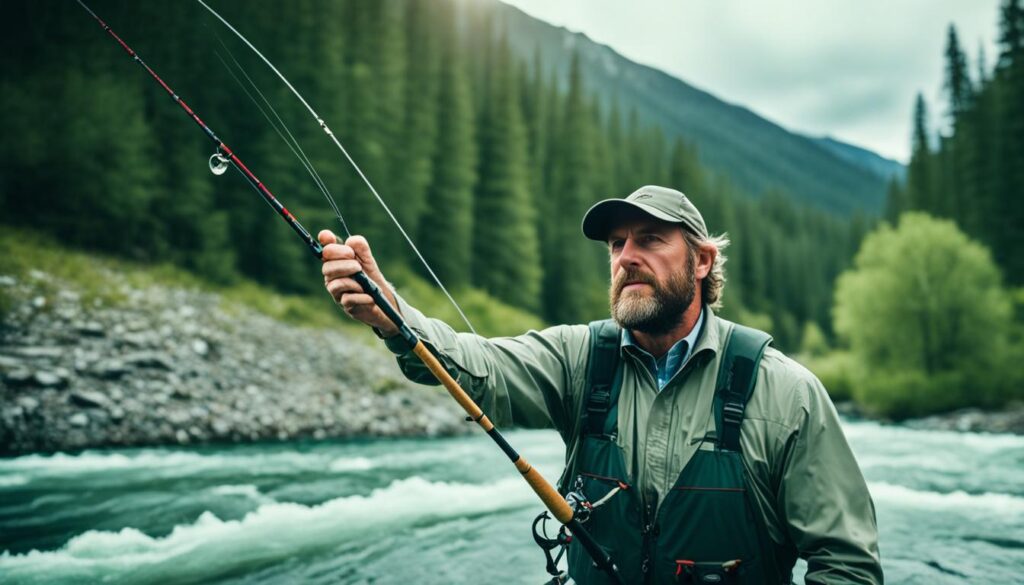
| Key Techniques for Mastering Dry Fly Presentations |
|---|
| Upstream Drift Technique |
| The Reach Cast |
| Minimize Excessive Mending |
| Continuous Observation |
| Practice and Patience |
Essential Gear for Dry Fly Fishing
To enjoy a successful dry fly fishing experience, we need to have the right gear. Here are the essential items you should have in your fishing arsenal:
Fly Rod and Line
A good-quality fly rod is essential for dry fly fishing. Look for a rod in the 8′ to 9′ 6″ range, which offers the ideal length for accurate casts and delicate presentations. Match your rod with an appropriate weight-forward floating fly line to ensure smooth line control and effortless casting.
Tapered Leaders
Using tapered leaders is crucial for achieving a seamless connection between the fly line and the fly. Opt for leaders with a breaking strain ranging from 3-lb to 4-lb. The taper of the leader helps transfer energy smoothly for precise presentations.
Fly Selection
Carry a variety of dry fly patterns in different sizes to match the local insect hatches. Some popular dry fly patterns include the Adams Parachute, Elk Hair Caddis, Blue Wing Olive, and Royal Wulff. Having a well-stocked fly box ensures you have the right fly at the right time.
Storage and Organization
A fly box is essential for storing and organizing your flies. Look for a box with compartments that allow you to separate different fly patterns and sizes. This makes it easier to find the right fly quickly and keeps them protected from damage.
Additional Gear
Aside from the essentials mentioned above, there are a few additional gear items that can enhance your dry fly fishing experience. These include:
- Fly Floatant: Helps keep your dry flies floating on the water’s surface.
- Tippet Material: Provides a strong and transparent connection between the fly and the leader.
- Nippers: Used for trimming excess tippet material and removing tags.
Having these gear items in your tackle bag ensures you are prepared for a successful dry fly fishing outing.
Dry Fly Fishing Tips for Beginners
For beginners, dry fly fishing can seem daunting, but with a few tips, you can start enjoying this angling technique. Here are some valuable suggestions to get you started:
- Observe the fish: Before making a cast, take the time to observe the fish and their behavior. Look for rising fish and try to assess the direction and speed of their feeding movements. This observation can help you determine the best position to make a cast and present the fly effectively.
- Start with simple patterns: Instead of overwhelming yourself with an extensive collection of flies, it’s best to start with a few simple patterns. Focus on the presentation rather than having a wide variety of flies. It’s important to choose patterns that mimic the local insect hatches and have confidence in their effectiveness.
- Practice casting techniques: Mastering casting techniques is crucial for successful dry fly fishing. Practice techniques such as the reach cast and curve cast to improve your accuracy and ability to achieve drag-free drifts. These techniques will help you present the fly in a natural and enticing manner.
- Be patient and persistent: Dry fly fishing requires time and practice to master. It’s important to be patient with yourself and persistent in your efforts. Remember that even experienced anglers face challenges on the water. Embrace the learning process and enjoy every moment of your dry fly fishing journey.
By following these tips, you’ll be well on your way to becoming a proficient dry fly angler. Remember to observe, simplify, practice, and stay patient. Dry fly fishing offers a unique and exciting angling experience that you can continue to refine and enjoy for years to come.
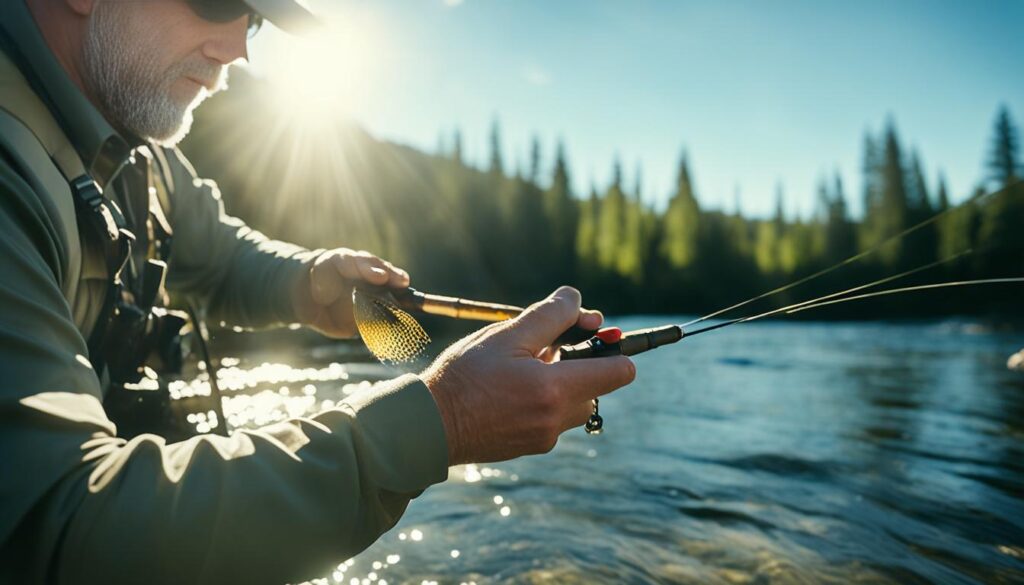
Testimonials
“These tips really helped me get started with dry fly fishing. I was initially overwhelmed, but observing the fish and focusing on simple patterns made a huge difference. With practice, I’ve improved my casting techniques and caught some beautiful trout. It’s an incredible experience!”
“As a beginner, I found dry fly fishing challenging, but these tips provided clear guidance. Starting with simple patterns and being patient with my progress has made all the difference. I’m now confident in my abilities and look forward to every fishing outing. Thank you!”
| Dry Fly Fishing Tips for Beginners | Benefits |
|---|---|
| Observe the fish | Optimal positioning for effective presentation |
| Start with simple patterns | Focus on presentation, confidence in fly selection |
| Practice casting techniques | Improved accuracy and drag-free drifts |
| Be patient and persistent | Continual learning and growth as an angler |
Conclusion
Dry fly fishing offers anglers an exciting and rewarding experience when pursuing trout. By familiarizing ourselves with the fundamentals of this technique, such as fly pattern selection, presentation techniques, and essential gear, we can significantly enhance our chances of success on the water.
For beginners looking to embark on their dry fly fishing journey, it is essential to prioritize observation, simplicity in fly selection, and honing casting skills. By closely observing the fish and their behavior, we can position ourselves for an effective cast and presentation. Starting with simple fly patterns and focusing on presentation rather than an extensive collection allows us to build confidence and connect with the fish.
Just like any skill, dry fly fishing requires practice and patience. With time and persistence, we can become proficient in this art and enjoy memorable experiences on the water. So let’s grab our gear, tie on our favorite dry fly, and head out to the river for a day filled with dry fly fishing adventure.
FAQ
What is dry fly fishing?
Dry fly fishing is an angling technique that involves presenting a floating fly on the water’s surface to entice trout to rise and take the bait.
What are the fundamentals of dry fly fishing?
The fundamentals of dry fly fishing include understanding the importance of fly pattern selection and presentation.
What are the best dry flies for fishing?
Popular dry fly patterns include Adams Parachute, Elk Hair Caddis, Blue Wing Olive, and Royal Wulff.
How do I cast a dry fly?
One technique is to cast the fly upstream of the target area, allowing it to drift downstream over the fish. A reach cast is a valuable tool for achieving a drag-free drift.
What gear do I need for dry fly fishing?
You will need a fly rod in the 8′ to 9′ 6″ range, matched with an appropriate weight-forward floating fly line, tapered leaders, and a variety of dry fly patterns in different sizes.
What are some dry fly fishing tips for beginners?
Beginners should observe the fish and their behavior before making a cast, start with simple fly patterns, and practice casting techniques such as the reach cast and curve cast.
